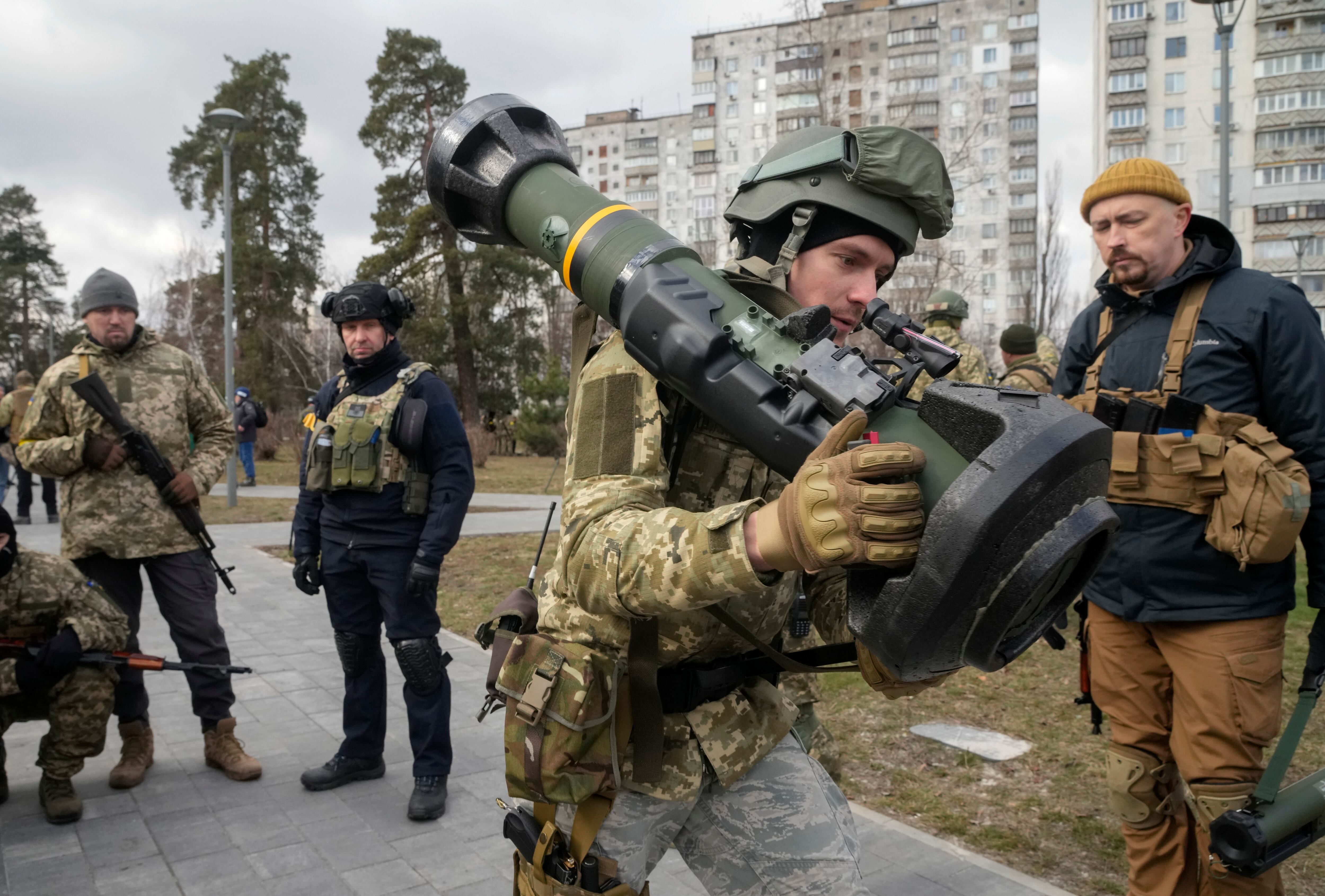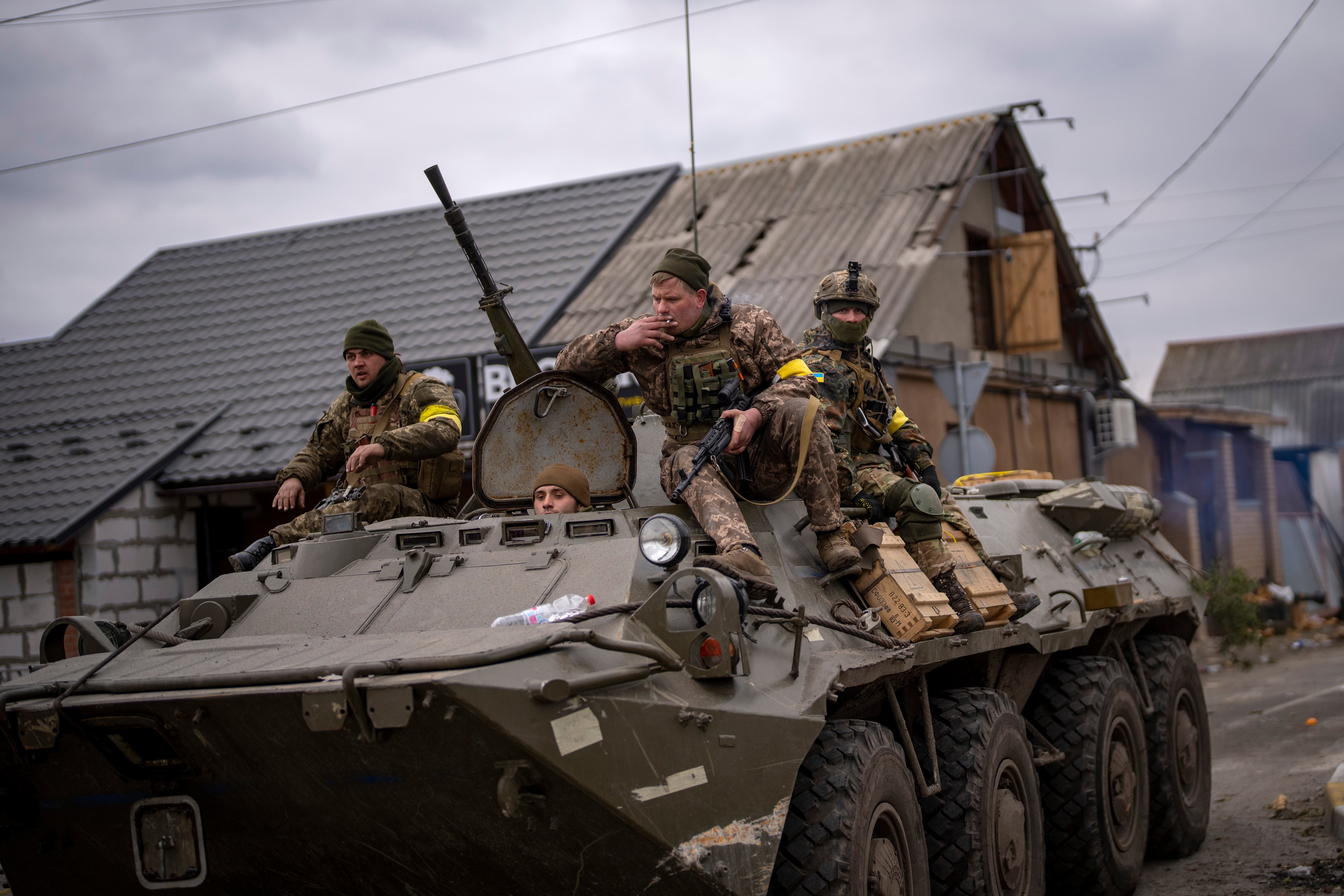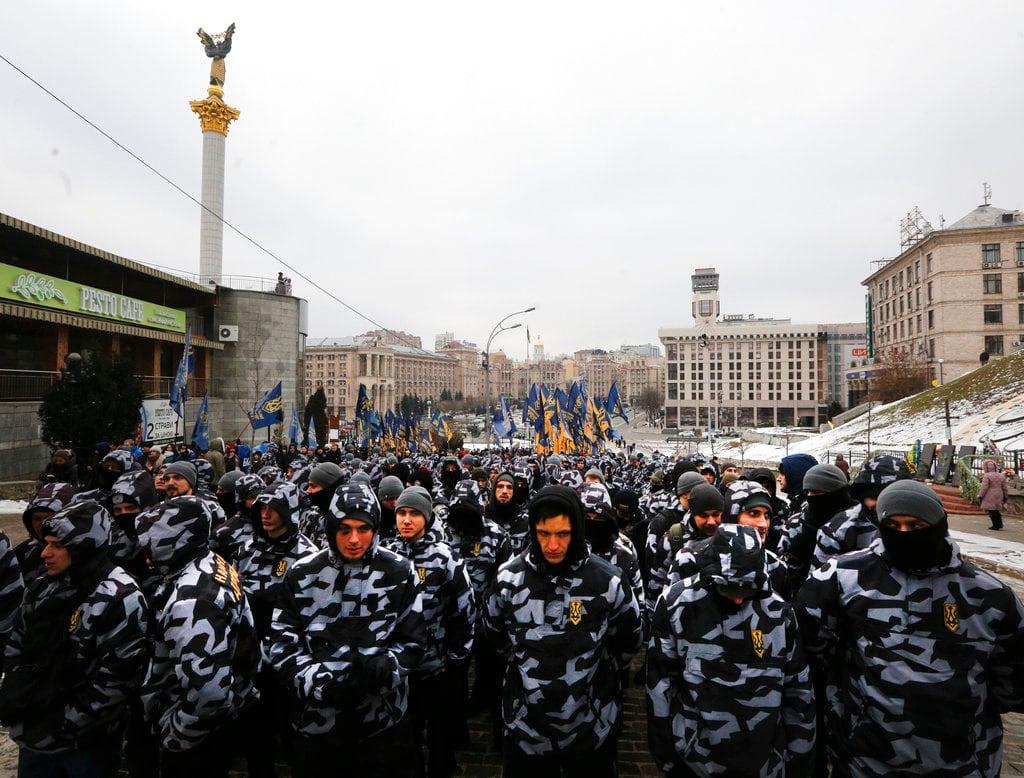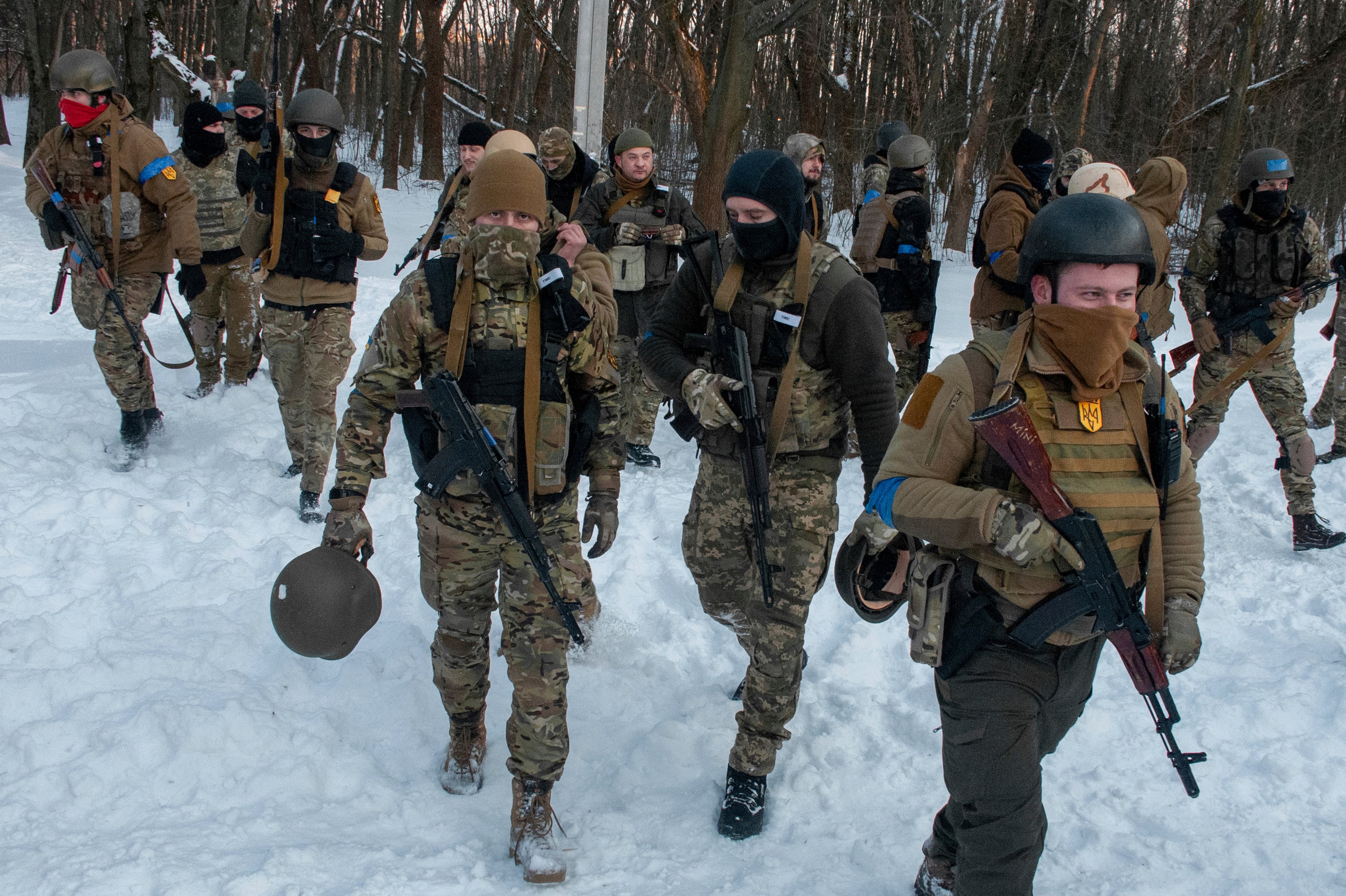From an undisclosed location in Ukraine, a former Georgian soldier runs a combined tactical operations center and military training camp that sends U.S. and other foreign fighters to battle Russia.
“We are still in the process of recruitment,” Mamuka Mamulashvili told Military Times in a Skype interview. “There are a lot of guys joining us. On the list, there are now about 750 men, mostly from Georgia, and the United Kingdom. We have a lot of Americans.”
Mamulashvili leads the Georgian National Legion, one of several paramilitaries integrated into the Ukrainian armed forces after the War in the Donbas, part of the larger conflict between Russia and Ukraine, began in 2014.
Now, following Russia’s full-scale invasion of Ukraine on Feb. 24, some U.S. military veterans eager for a war with what they see as a righteous cause have pledged to come to Ukraine’s defense.
The Georgian National Legion hopes to relieve the Ukrainian military of some of the logistical burden that comes with organizing overseas recruits. But absorbing the 16,000 foreigners ― the number that Ukrainian President Volodymyr Zelenskyy claims have volunteered ― will be a challenge.
Flooding conflicts with foreign fighters can animate extremist movements or offer experience to the already radicalized. And though the vast majority of fighters who travel to Ukraine will be well-intentioned, it’s not clear how many will be particularly helpful on the battlefield given language and training barriers.
Foreigners may be more useful in a propaganda role to signal global unity rather than as a front-line fighting force.
Three veterans spoke with Military Times and offered a mix of plans for how they would fight in Ukraine.
Only one intended to join the fledgling International Legion that Ukrainian officials have been promoting. But all three echoed similar concerns about Ukrainian embassies that are slow to process applications and worries about contractual obligations.
“The contract with the Ukrainians sounds a little bit more ambiguous — a little more long-term,” said a Marine veteran who is traveling now and who hopes to join a unit other than the International Legion.
He had connected with a group of like-minded U.S. veterans on Reddit.
“They vetted me and put me into a Signal group chat with about 15 people and we’ve been organizing,” said the U.S. veteran, who asked that his name be withheld for this article.
Paperwork hurdles
Setting up an international legion is a bold undertaking for a government that, while punching above its weight class in its war with Russia, is nevertheless facing overwhelming odds.
Ukraine is trying to screen applicants as fast as possible, Ukrainian Maj. Gen. Borys Kremenestkiy, a military attaché in Washington, D.C., told Military Times. But vetters have to parse out those with criminal records and those who are too old or otherwise unfit for service.
So far, the embassy has received about 6,000 applications, Kremenestkiy said, adding that about half immediately were turned down for various reasons. Of those 3,000, the embassy has approved about 100 people to join Ukraine’s International Legion.
“It’s not surprising that there have been administrative challenges given the scale of foreigners who have responded to this call,” said Austin C. Doctor, director of counterterrorism research initiatives at the U.S. Department of Homeland Security’s NCITE Center. “But from a broader security standpoint, I think it’s especially important that the Ukrainian government does its best to create the administrative infrastructure to incorporate these hires into formal units for purposes of monitoring and accountability.”

The processing delays have caused some volunteers to grow frustrated.
It took one 82nd Airborne Division Army veteran days even to get in touch with the Ukrainian embassy and submit his application, he told Military Times. He received a notification indicating that his application was being reviewed, but was not given a timeline on when it may be approved or denied.
“Every hour feels like a day, he said. “Every day feels like a week. At the end of the day, as a combat soldier, what is the rush?”
Others are not so patient.
Kremenstkiy said he was aware that some volunteers have been traveling to Ukraine without going through any formal process to join the International Legion. But his goal is to properly vet as many as possible, even if that takes longer than desirable.
“I don’t have a big staff to work with and we have other areas, like working with the Pentagon on security assistance,” he said. “That is more important.”
“We have to see everyone or talk to everyone,” he said. “So they can try and go on their own, but I have a task to talk to everyone.”
While U.S. citizens can go abroad to enlist in a foreign military, they could be in legal trouble if they’re “recruited or hired” in the U.S., which may be why Ukraine is having volunteers sign contracts when they arrive. The Defense Department still has discouraged U.S. citizens from volunteering.
“We still do not believe that Ukraine is a safe place for Americans to go,” Pentagon spokesman John Kirby told reporters March 7. “We urge them not to go. And if any are still there, we urge them to leave.”
Skipping red tape
Beyond organizational delays, some U.S. volunteers are uncomfortable committing to fight in Ukraine for the duration of the war, especially without knowing exactly how the end is defined.
Corey Wetherholt said he has joined an independent militia over concerns about the ambiguous commitment.
The veteran is no stranger to volunteering in foreign war zones.
After being administratively separated from the Marine Corps following two years in the infantry, Wetherholt headed to Syria as a volunteer for the People’s Protection Unit, or YPG. After seven months in Syria, he returned to the United States, but before long he was in Iraq with the Sinjar Resistance Units, or YBS.
On his way home from 13 months in Iraq, Wetherholt heard about Russia’s invasion and changed his plans.
Once in Ukraine, Wetherholt linked up with other foreigners who served in Iraq and Syria. The group, which he declined to name, plans to go to Kyiv, Ukraine, for paperwork that would show they were operating in the country with the permission of the Ukrainian government and are not Russian forces.
“No ideology or politics, just guys who wouldn’t wanna miss out on a just war,” Wetherholt said. “The big one.”

Integrating foreign volunteers will be a challenge if the 16,000 number claimed by Ukraine is accurate, according to Ilmari Käihkö, a Finnish military veteran and an associate professor at the Swedish Defence University in Stockholm, who has researched the volunteer phenomenon in Ukraine.
“While some of the volunteers will no doubt contribute to the military effort on the Ukrainian side, many probably won’t have much of an effect,” Käihkö told Military Times. “However, there is a political benefit for Ukraine in receiving volunteers from abroad, as this makes the Ukrainian cause more relevant in other countries. The propaganda value may be considerable.”
There’s also good reason to be skeptical about any volunteer’s plans that involve fighting for independent groups outside official Ukrainian channels.
Käihkö said his Ukrainian contacts doubt such units “can constitute any considerable forces.”
And any independent fighters could be forced to join the International Legion or cease activities.
The Ukrainian military has greatly increased its command and control in recent years, and any units independent of its efforts present practical problems, Käihkö said ― like friendly fire.
“This said, one possible explanation for the existence of volunteer units could be red tape,” he explained. “Many foreign volunteers no doubt want to get to the fight fast, and the Ukrainian army might not offer the quickest way to do this.”
“Then again, I have already seen photos of Swedish volunteers in Ukrainian gear, so the process seems to be quick.”
A history of militias
Ukraine has a history of volunteer battalions that sprouted up in the early days of the War in the Donbas.
In 2019, about 17,000 people from more than 50 countries traveled to participate in the conflict, the Soufan Center nonprofit estimated, most fighting for pro-Russian separatists.
Mamulashvili’s Georgian National Legion was organized in 2014 and has served as a clearinghouse for some of those foreigners who fought on the Ukrainian side. The Georgian’s unit officially was integrated into the Ukrainian armed forces in 2016.
“We are under control of Ukrainian armed forces,” Mamulashvili said. “We work with several different structures. And we work under their command.”
Mamulashvili’s forces have unique insight into integrating foreign fighters that the burgeoning International Legion lacks.
“They have no experience in doing such a job. And they’re using our skills,” Mamulashvili said.
A complicating factor in the Ukraine conflict has been the presence of far-right paramilitaries on both sides of the conflict, such as Azov, which started as a volunteer militia and attracted foreign members, including U.S. neo-Nazis. It eventually was absorbed into Ukraine’s National Guard.
But despite Russian President Vladimir Putin’s claims that his invasion is intended to “de-Nazify” Ukraine, extremists, like those of the Russian Imperial Movement, also fought for separatists in the Donbas.

The history of ideological units is one reason why Doctor, the counterterrorism researcher, stresses the need for a formal enlistment process with direct supervision, monitoring and accountability.
“There are likely going to be some [volunteers] who are doing this for more malevolent purposes, especially if the conflict that we’ve seen in the Donbas region is any indicator, particularly as it relates to receiving training or connecting with persons affiliated with Nazi or white supremacist organizations on the ground,” Doctor said. “Looking at that risk with eyes wide open will be important.”
Monitoring foreign volunteers probably will be more important for their home countries. For Ukraine, the risk is likely limited, according to Käihkö, the Swedish Defense University professor.
“I have difficulties seeing how foreign volunteers can become the kind of domestic political force in Ukraine the volunteer battalions constituted in 2014–2015,” Käihkö said. “It is good to keep in mind that many of these foreign volunteers come with their own motivations and without military background. Few probably speak Ukrainian or Russian. Even in the best case scenario they might get gear they’ve never used before. For Ukraine the risk is probably limited, and consists mainly of Russian accusations of a NATO army in Ukraine.”
Käihkö echoed the warnings by some analysts that individuals with radical views might travel to Ukraine to get combat experience that could be used back home, and domestic intelligence agencies should take note. But intelligence agents may find other uses for returning volunteers, as well.
“This said, military intelligence might also be interested to learn as much about the situation in Ukraine and Russian tactics as possible,” Käihkö said.
Kyle Rempfer was an editor and reporter who has covered combat operations, criminal cases, foreign military assistance and training accidents. Before entering journalism, Kyle served in U.S. Air Force Special Tactics and deployed in 2014 to Paktika Province, Afghanistan, and Baghdad, Iraq.
Howard Altman is an award-winning editor and reporter who was previously the military reporter for the Tampa Bay Times and before that the Tampa Tribune, where he covered USCENTCOM, USSOCOM and SOF writ large among many other topics.




